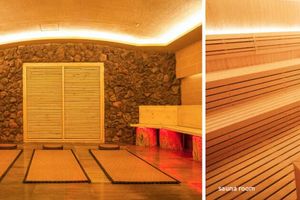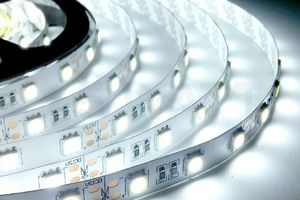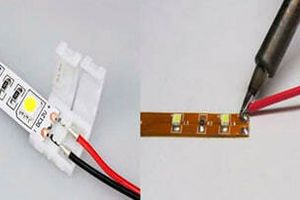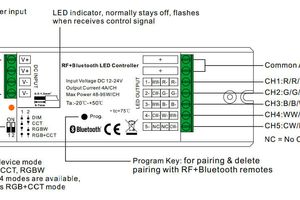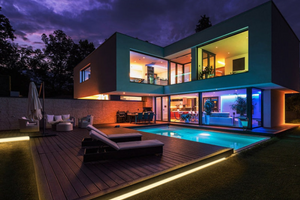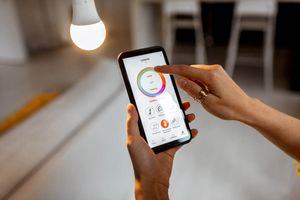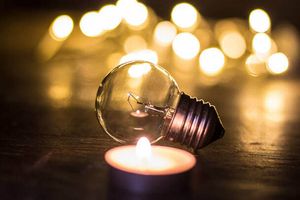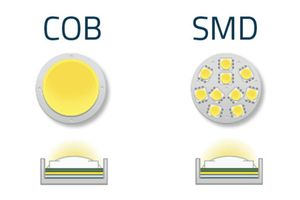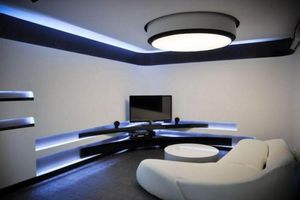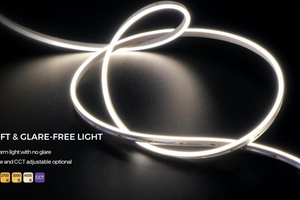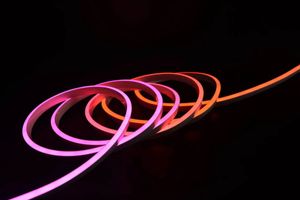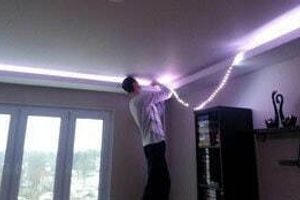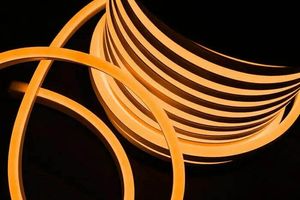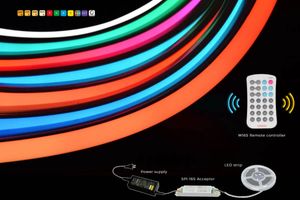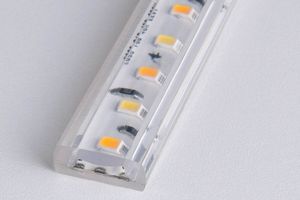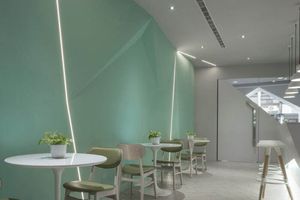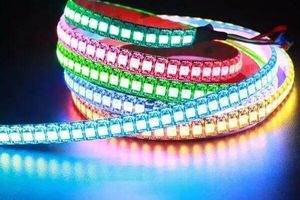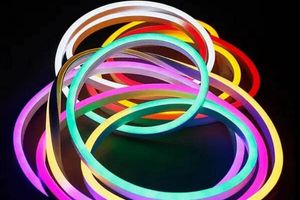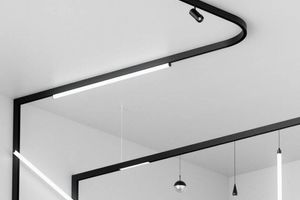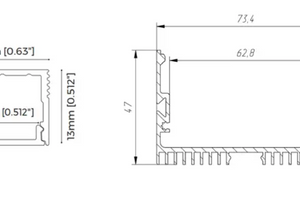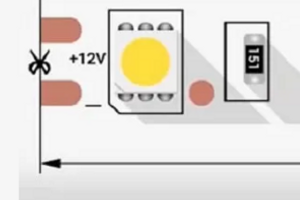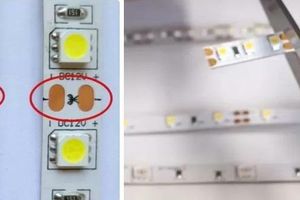Today's commercial and residential interior designers often use LED strip lights as they are an essential element that provides unparalleled ambience and creative possibilities. But you should understand how to properly connect the LED strip to the power supply and how it works.
Proper installation is key to an efficient LED system. Incorrect connection not only makes it difficult to achieve the desired result, but can shorten the life of the tape. Let's consider the main aspects related to the installation of LED strips together with PROLUM specialists.
What voltage should be to connect the LED strip?
Most strips cannot simply be plugged into a standard outlet because they require an appropriate power supply with the correct voltage. For example, when using an LED strip with a voltage of 220V, a classic plug is used, which is connected through a rectifier.
Options for using an LED strip depend on your specific needs and design goals. Here are some options:
Decorative lighting: LED strip is used to create a mood, highlight architectural details or decorative elements. In this case, tapes with a voltage of 12 or 24 volts are often used.
Additional illumination of the work area: LED strip can be used to provide additional illumination of the work area, for example, under kitchen cabinets or on a desktop. In this case, it is advisable to choose tapes with a voltage of 48 volts, which provide bright and uniform lighting.
Main lighting of the room: in some cases, LED strips can be used as the main source of lighting in the room. Here you can use tapes with a voltage of 220 volts or 48 volts, depending on the brightness requirements and type of installation.
Architectural lighting: LED strips can be used to illuminate architectural details, building facades or landscaping. Here, the choice of voltage depends on the specific situation and requirements for protecting the tapes from moisture and dust.
The use of LED strips can be varied and depends on the creative ideas and requirements of the project. It is important to consider the power, voltage and other technical characteristics of the strips to achieve the maximum effect from lighting with LED strips.
How to connect several LED strips?
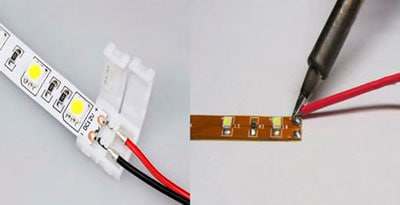
Connecting LED strips can be done by soldering or using special connectors. Each of these methods has its own characteristics:
Soldering: This method allows you to achieve a reliable and neat connection. However, installation using soldering is a more time-consuming and labor-intensive process and requires soldering skills, additional tools and materials.
Connectors: The use of connectors allows you to quickly and easily connect and disconnect LED strips. This installation method does not require special skills and allows you to conveniently change the configuration of the tapes. However, there is a risk of loss of contact in the connection area, and the LED strip may not adhere closely enough to the surface.
When connecting LED strips, it is important to maintain the correct polarity. Violation of the polarity can lead to failure of the LEDs or incorrect operation of the tape. Therefore, it is imperative to observe the correct polarity when connecting the tapes.
How to attach LED strips?

From the practice of installing LED strips, it follows that they can be mounted on any surface. Typically, tapes are equipped with an adhesive base that is securely attached to various surfaces.
During installation, the tape can be easily peeled off from the surface, but after a few days it will be more difficult. It is important to know that LEDs are sensitive to overheating. If used for a long time at elevated temperatures, they may deteriorate luminosity or fail.
To avoid such problems, it is important to install the LED strip in places with good air circulation. The ideal option is to use aluminum plates as the basis for the LEDs. If these recommendations are followed, the tapes will last much longer.
On the back of the LED strip there is an adhesive base that can be opened by removing the protective film. Before installation, it is important to ensure that the surface is clean, removing dirt and grease from it, and then allowing it to dry. The most convenient way to apply the tape is to hold it towards you. When installing, you should press it between the LEDs to ensure a strong grip.
Connecting and installing LED strip
When you have decided how to connect the LED strip (via a connector or soldering), you need to select the appropriate connection method:
Using multiple power supplies for different areas: If you plan to use multiple strips of tape, each strip can be powered by a separate power supply. This will ensure better stability and avoid voltage drop over long periods.
One powerful converter for the entire strip: If your strip is not too long and does not exceed the maximum power of the power supply, you can connect the entire strip to one powerful converter.
Using a Power Supply with a Controller/Dimer Added: If you want to be able to adjust the brightness or color of your LED strip, you can use a power supply with a controller or dimer.
Regardless of the connection method, before directly connecting the LED strip to the power supply, you should make sure that all connections are correct. It is also recommended to check for dark areas on the tape. Typically, with tape lengths up to 5 m, such problems rarely arise. However, when connecting several segments, each of them must be powered separately from the power supply. When connecting the second segment to the first, a deterioration in brightness may be observed due to a voltage drop.
How to connect an LED strip to a power supply?
Connecting LED strips to a 12-24 volt power supply is a fairly simple process. Particular attention should be paid to the correct connection of the inverter. Universal power supplies often have terminals for different voltages.
If you plan to connect a 24 volt LED strip to 12 volt equipment, this will not cause damage. However, if you connect LEDs designed for 12 volts to a 24 volt terminal, this will adversely affect their performance and may lead to failure.
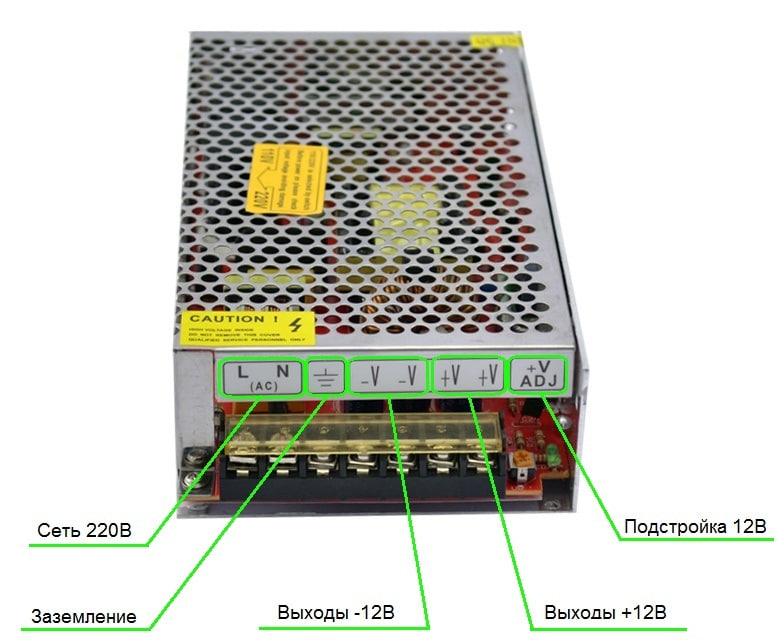
For proper connection you will need the following components and materials:
- LED strip that you plan to connect.
- Three-core cable with a cross-section of 1.5 mm for connecting the power supply to a 220 V network.
- Mounting wire with a cross-section of 1.5 mm for connecting the LED strip and connecting to the power supply. It is most convenient to use a wire with a silicone sheath, although it is more expensive than a PVC braided wire.
- Power converter for 12 or 24 volts with the required power.
- If necessary, you can purchase a controller, dimmer and control panel, which simplifies the management of the LED strip.
Additionally, it is recommended to ensure natural ventilation of the equipment during installation to avoid overheating. If possible, use a three-wire cable with grounding, or a two-wire cable if grounding is not provided.
Before you begin connecting wires to the power supply, you must correctly determine which wire is neutral, phase and ground. If you are unsure, it is recommended to consult a specialist. Typically the wires have the following designation:
- The phase is connected to terminal L.
- The zero is connected to terminal N.
- The grounding connection is connected to the grounding terminal.
Incorrect connection of wires can be dangerous, especially when working with 220 V voltage, which can threaten life and health. After identifying the wires, they must be correctly connected to the power supply:
- The phase is connected to terminal L.
- Zero is connected to terminal N.
- The ground connection is connected to the appropriate ground terminal.
The system can operate without grounding only with phase and neutral. However, it is important to know that without grounding, static voltage may develop on the body of the switching power supply, which can cause discomfort when in contact with the device.
It is also important to understand that the switch, if there is one, must be installed in the 220 volt network - power supply - LED strip circuit immediately before the power supply, and not after it. This will allow you to disconnect the power and the LED strip from the network. If the switch is located after the power supply, the converter will be constantly energized, which can be dangerous for humans and the equipment itself.
Here are some recommendations from the Artled online store for installing LED strips:
- Installation on an aluminum profile: It is recommended to install the LED strip on an aluminum profile, which will allow proper heat dissipation. This will contribute to the long service life of the tape.
- Selecting the correct wire cross-section: When connecting the LED strip, use copper wires with a calculation of 1 mm per 10 amperes. The longer the connection, the larger cross-section of the main cable is needed.
- Connecting Wires: It is recommended to address the reels from the cable trunk by twisting the electrical wire and then soldering and insulating it. You can also use Vago type terminals, which provide a quick and reliable connection.
- Selecting a power supply: When choosing a power supply, leave a power reserve of up to 30%. This will ensure stable power and prevent the unit from overloading.
- Avoiding Voltage Surges: Try to avoid sudden changes in voltage as this can adversely affect the quality of lighting and the operation of equipment.
- Strip protection: Make sure that the LED strip is reliably protected from strong mechanical stress and damage that may occur during installation or operation.
It is important to follow these recommendations to ensure safety, longevity and quality lighting of the LED strip.
When installing LED strips, it is recommended to contact professionals, especially if there are doubts about connecting electrical wires. In addition, it is worth noting that the ArtLED store offers a wide range of not only LED strips, but also all the necessary components for connecting them. By contacting such specialized stores, you can get high-quality materials and professional advice, which will contribute to the successful installation and operation of LED strips.
In general, the correct connection and use of LED strips allows you to create aesthetic and functional lighting in various rooms. It is important to follow installation and connection recommendations, and also use the services of specialized stores such as ArtLED to purchase quality components and obtain the necessary information.















